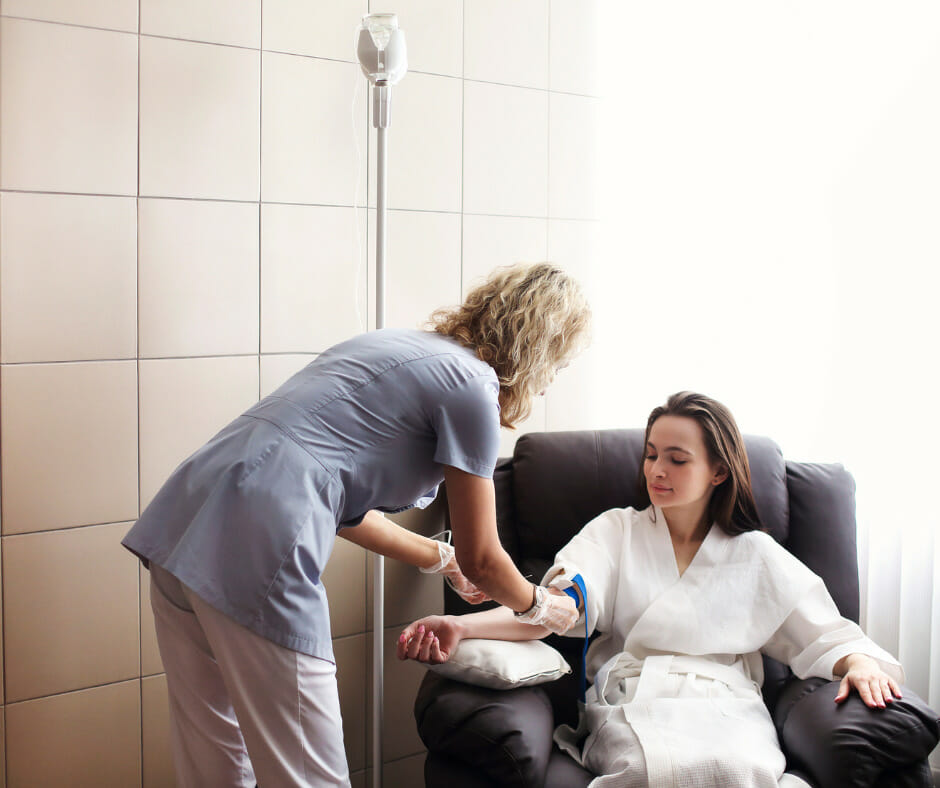The world of drugs rehabilitation centers can be overwhelming, with so many options and factors to consider. Yet, understanding the ins and outs of these life-changing facilities can empower individuals and their families to make informed decisions and find the most suitable treatment for their unique needs. In this comprehensive guide, we’ll explore the types of drugs rehabilitation centers, treatment approaches, factors to consider when choosing a center, cost and insurance coverage, and much more. Let’s embark on this journey to better comprehend the road to recovery and the support available along the way.
Key Takeaways
- Drug rehabilitation centers provide specialized treatment for individuals seeking to overcome addiction, with various types and approaches available.
- Factors such as type of treatment needed, location & cost of the center and personnel credentials should be considered when selecting a drug rehab center.
- Mental preparation is key to successful recovery. Setting realistic goals, maintaining positive attitude and taking responsibility are essential steps in the process.
Understanding Drug Rehabilitation Centers

Drug rehabilitation centers, also known as treatment centers, are organizations that provide treatment and support for individuals experiencing difficulties related to drug and alcohol addiction. They offer a variety of treatment programs tailored to address specific needs, such as inpatient, outpatient, partial hospitalization, and follow-up support. The Betty Ford Center, for instance, offers the COR-12 addiction treatment program designed specifically for alcohol addiction, which includes individual counseling, group therapy, and educational sessions.
Choosing the right drug rehabilitation center is a vital part of the recovery journey. Investigating treatment options and taking into account factors like location, staff credentials and experience, as well as cost and insurance coverage is necessary. The upcoming sections will explore various types of drug rehab centers, their treatment methods, and factors to keep in mind when selecting a center.
Types of Drug Rehabilitation Centers
There are four main types of rehabilitation centers, namely:
- Inpatient: Designed to suit the individual’s requirements and involves living at the center during treatment.
- Outpatient: Allows patients to live at home or in a non-clinical setting outside of treatment hours, which can be particularly beneficial for those dealing with mental health disorders alongside addiction.
- Long-term residential: Provides extended care and support for individuals with severe addiction issues.
- Short-term residential: Offers intensive treatment for a shorter duration, typically ranging from a few weeks to a few months.
These different types of rehabilitation centers are designed to address drug abuse and addiction in various ways, providing individuals with the necessary support and treatment options based on their specific needs.
Long-term residential facilities offer extended care, typically lasting several months to a year. These centers focus on providing a structured, supportive environment that promotes lasting change and recovery.
Short-term residential treatment facilities offer intensive treatment over a shorter period, usually lasting a few weeks to a month. These programs often serve as a stepping stone to outpatient care or other forms of ongoing support.
Each type of center has its unique benefits and drawbacks, and the choice ultimately depends on individual needs and circumstances.
Treatment Approaches

Drug rehabilitation centers utilize a variety of treatment approaches to address addiction, including:
- Behavioral therapies
- Medication-assisted treatment (MAT)
- Individual counseling
- Group therapy
- Family therapy
- Holistic approaches
Behavioral therapies focus on altering a person’s behavior and thought processes to help them overcome their addiction. Examples of such therapies include cognitive-behavioral therapy, dialectical behavior therapy, and contingency management. Studies have proven the efficacy of cognitive-behavioral therapy for treating drug and alcohol addiction. For example, according to a study of psychosocial treatment for cocaine dependence, 60% of patients in the CBT provided clean toxicology screens at 52-week follow-up.
Medication-assisted treatment (MAT) combines drug treatment with counseling and behavioral therapies to help individuals manage withdrawal symptoms and cravings, and maintain their recovery. Common medications used in MAT include methadone, buprenorphine, and naltrexone.
Other treatment approaches like individual counseling, group therapy, and family therapy help individuals understand their alcohol abuse and build coping skills to deal with cravings and triggers. Additionally, drug addiction treatment can provide further support for those struggling with substance abuse.
Holistic approaches, such as yoga, meditation, and art therapy, are also employed to support individuals in their recovery journey.
Factors to Consider When Choosing a Drug Rehab Center

Choosing a drug rehabilitation center requires careful consideration of several factors to find the best fit for the person seeking treatment. Some key factors to consider include:
- The type of treatment required
- The location of the center
- The credentials and experience of the personnel
- The cost and insurance coverage
Taking these factors into account will help you make an informed decision about the best drug rehabilitation center for you or your loved one.
Subsequent subsections will highlight the significance of accreditation and licensing, in addition to staff credentials and experience.
Accreditation and Licensing
Accreditation and licensing are of paramount importance when selecting a drug rehabilitation center, as they guarantee that the center meets certain standards of quality and safety. Accreditation is a voluntary process in which an independent organization evaluates the center’s programs and services to ensure compliance with specific criteria, while licensing is a legal requirement that the center must fulfill in order to operate.
Organizations responsible for providing accreditation and licensing include:
- The Joint Commission
- The Commission on Accreditation of Rehabilitation Facilities (CARF)
- The National Association of Addiction Treatment Providers (NAATP)
By choosing an accredited and licensed drug rehab center, individuals can be assured that the facility adheres to optimal standards, employs competent personnel, and provides efficient treatment for those seeking rehabilitation from drug addiction.
Staff Credentials and Experience
The qualifications and experience of the staff at a drug rehab center play a vital role in the effectiveness of treatment and support provided to individuals struggling with addiction. Professionally trained and credentialed staff members, such as:
- licensed clinical social workers
- counselors
- psychologists
- psychiatrists
- certified addiction specialists
Obtaining quality and effective treatment services is essential in tackling substance use disorders. When choosing a drug rehabilitation center, it’s crucial to consider the qualifications and experience of the staff as it will have a direct impact on the quality of care received. Assessing the center’s staff credentials and experience helps ensure that the facility is capable of providing the necessary support and resources for a successful and long-term recovery from alcoholism.
Cost and Insurance Coverage for Drug Rehab Centers

Addiction treatment costs can significantly differ from one center to another. Hence, conducting cost research before settling on a treatment center is advisable. Some individuals may have health insurance that covers co-insurance payments, deductibles, and other costs for private drug rehabilitation programs.
Subsequent subsections will outline the differences between private and state-funded centers and discuss insurance coverage for addiction treatment.
Private vs. State-Funded Centers
Private drug rehab programs can range from several thousand dollars to tens of thousands of dollars, depending on factors such as comfort, amenities, and activities. Higher-cost drug rehabilitation programs may offer more services and amenities to make the detoxification and treatment process more comfortable, as well as provide a network of support beyond treatment.
State-funded addiction treatment programs, on the other hand, are an option for those who may not have private insurance or cannot afford the cost of private drug rehab programs. These centers offer a more affordable alternative, but may come with certain limitations, such as fewer amenities and longer waiting lists for treatment.
Ultimately, the choice between private and state-funded centers will depend on the individual’s financial situation and personal preferences.
Insurance Coverage for Addiction Treatment
Health insurance may cover various expenses related to addiction treatment, such as co-insurance payments, deductibles, and other costs for private drug rehab programs. To determine whether your health insurance provider will cover rehabilitation, you can review your policy online and consult with your insurance provider regarding coverage for addiction treatment.
You have lost your job and your health insurance was through your previous employer. It is highly recommended that you enroll in COBRA for healthcare coverage. COBRA allows you to continue your existing health insurance coverage for a limited time, ensuring that you have access to the necessary treatment and care during your recovery journey. Understanding your insurance coverage and exploring available payment options is crucial when seeking addiction treatment.
Accessing Low-Cost or Free Rehab Centers

For those in need of low-cost or free drug rehab centers, there are options available such as nonprofit organizations, government-funded programs, and faith-based centers. These centers are funded through various sources, including charitable donations, private endowments, and government grants.
Upcoming subsections will delve into the application process and eligibility for low-cost or free rehab centers, and the potential disadvantages of these facilities.
Application Process and Eligibility
To access low-cost or free rehab centers, individuals can utilize online resources, such as government websites or directories, to identify these facilities. When contacting a rehab center, it’s important to provide details regarding your addiction and any pertinent medical history. The application form may require personal information, medical history, and details regarding your addiction. Some low-cost or free rehab centers may also require evidence of income or insurance status.
After submitting your application form and accompanying documents, the rehab center will review your application and determine if you meet their eligibility criteria. If your application is accepted, you will be notified of the next steps, such as arranging an intake assessment or admission into the program.
Potential Drawbacks
While low-cost or free rehab centers can provide much-needed support for those facing financial challenges, they may come with certain drawbacks. These centers may have waiting lists, which can lead to delays in treatment and be disadvantageous to those in need of immediate assistance. Additionally, limited resources and basic services may result in a lower quality of care compared to more expensive rehab centers.
Despite these potential drawbacks, low-cost or free rehab centers can still offer valuable support and resources for individuals seeking treatment. It’s essential to weigh the pros and cons of each facility before making a decision and to consider other factors such as location, treatment approach, and staff qualifications.
Finding Drug Rehabilitation Centers Near You

Locating drug rehabilitation centers in your area can be made easier with the help of resources such as SAMHSA’s National Helpline, online directories, and local support groups. The Substance Abuse and Mental Health Services Administration (SAMHSA) provides a National Helpline that offers advice and referrals for individuals seeking drug rehab centers.
Subsequent subsections will cover online resources and local support networks that can aid in finding nearby rehab centers.
Fact: According to National Institute of Drug Abuse, out of the 7.7 million Americans diagnosed with co-occurring disorders more than 50% receive neither mental health care nor substance abuse treatment.
Online Resources
Several online tools and resources are available to help locate drug rehab centers in your area. These include:
- SAMHSA National Helpline
- American Addiction Centers
- DEA Recovery Resources
- Substance Use Resource Center
These websites provide information and guidance on various drug rehabilitation centers, as well as advice on navigating treatment options and understanding insurance coverage.
Utilizing these online resources can significantly simplify the process of finding a suitable drug rehab center. By researching and comparing different facilities, you can make an informed decision based on your specific needs and preferences.
Local Support Networks
Local support networks, such as healthcare providers, community organizations, and addiction support groups, can also play a crucial role in helping you find drug rehab centers near you. These networks can offer guidance and provide referrals for those seeking drug rehabilitation centers.
Past research has demonstrated favorable results associated with engaging in peer support groups. For example, a study published in Substance Abuse and Rehabilitation suggests, ” Active engagement in peer support groups has shown to be a key predictor of recovery and sustaining recovery.” (Benefits of peer support groups in the treatment of addiction, Tracy, Wallace, 2016)
By tapping into local resources, you can gain invaluable insight into the available treatment options in your area and receive support from others who have experienced similar challenges. Connecting with local support networks not only helps you find a suitable rehab center, but also ensures a strong foundation for your recovery journey.
Preparing for Drug Rehabilitation

Entering a drug rehabilitation center can be a daunting experience, especially for those who are unsure of what to expect. To help alleviate concerns and prepare for the journey ahead, it’s essential to understand the process of rehab, come to terms with addiction, and be ready for detox and sustained sobriety.
Upcoming subsections will provide guidance on what to bring to a drug rehab center and share tips on mentally preparing for the challenges and transformations that come with the treatment process.
What to Bring
When attending drug rehabilitation, it’s advisable to bring personal hygiene and beauty items such as:
- deodorant
- toothbrush and toothpaste
- shampoo and conditioner
- hair styling products
However, it’s crucial to refrain from bringing expensive clothing, footwear, or accessories, and leave behind any valuable items that may be misplaced during treatment.
It’s also important to note that most inpatient rehabilitation centers for alcohol have strict rules regarding prohibited items. The following items are generally not allowed in these facilities:
- Alcoholic beverages
- Illicit drugs
- Revealing clothing
- Pornography
- Weapons
By packing appropriately and adhering to the center’s guidelines, you can ensure a smoother transition into the rehab environment.
Mental Preparation
Mentally preparing for drug rehabilitation is a crucial aspect of the recovery journey. It’s important to set realistic goals, maintain a positive outlook, and seek support from family and friends.
Additionally, being open to change and taking responsibility for your own recovery is essential in overcoming addiction and maintaining long-term sobriety. Facing the challenges and changes that come with drug rehabilitation can be difficult, but with the right mental preparation and support, individuals can successfully navigate the recovery process and build a strong foundation for a healthier, addiction-free life.

Summary
In conclusion, understanding the various types of drug rehabilitation centers, treatment approaches, and factors to consider when choosing a facility is essential in making informed decisions for successful recovery. By exploring available resources, tapping into local support networks, and mentally preparing for the journey ahead, individuals can confidently embark on their path to overcoming addiction and rebuilding a healthier, more fulfilling life.
Frequently Asked Questions
Can you get SSI for being addicted to drugs?
Due to amendments made to the Social Security Act in 1996, it is not possible to receive SSI benefits based solely on drug addiction. The SSA will, however, consider applicants with substance addiction disorders who are actively abusing drugs or alcohol if they can prove that the disability is permanent.
What is the meaning of rehab center?
A rehabilitation center is a clinic providing treatment for those suffering from alcohol or drug addiction, giving them a chance to lead healthier lives.
Rehabilitation centers offer a variety of services, including counseling, group therapy, and medical care, to help individuals overcome their addiction and lead healthier lives. They also provide support and guidance to help individuals stay on track.
How many rehabilitation centers are in the US?
There are currently over 45,905 Physical Therapy Rehabilitation Centers in the US, with an increase of 2.6% from the previous year. The number is expected to keep growing due to increased insurance coverage under the ACA and Medicaid, as well as the opioid epidemic.









